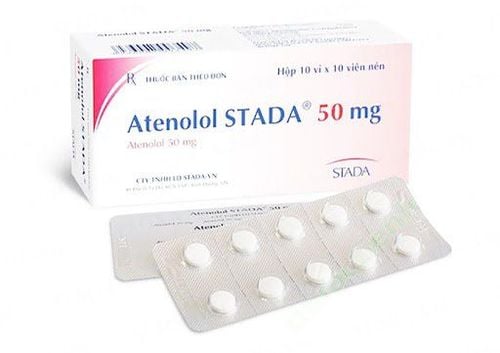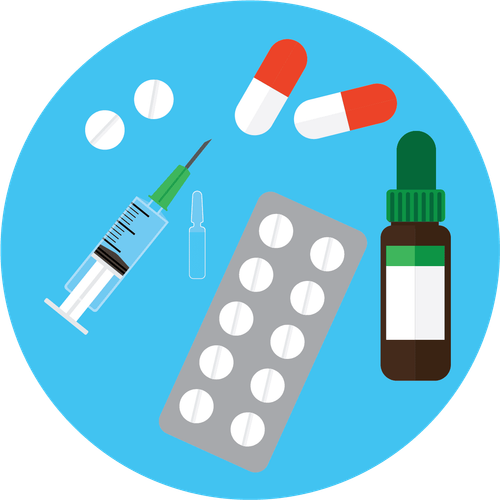This is an automatically translated article.
Diltiazem is an antihypertensive drug belonging to the group of calcium channel blockers. In addition, Diltiazem is also used to improve angina and Raynaud's phenomenon. The mechanism of calcium channel blockers is generally used to lower blood pressure in the treatment of hypertension, angina, atrial fibrillation, and migraines by dilating blood vessels allowing blood to flow more easily. to different parts of the body.1.What is Diltiazem? Diltiazem is a calcium channel blocker, used as monotherapy or in combination with other drugs such as drugs for hypertension and angina. When high blood pressure is present, there is an additional preload on the workload of the heart and arteries. If this condition persists, the heart and arteries may no longer be able to function properly, leading to microscopic lesions on the blood vessels. As a result, patients have an increased risk of stroke, heart failure, or decreased kidney function. Furthermore, high blood pressure can also increase the risk of a heart attack, and this risk decreases rapidly if blood pressure is controlled. Diltiazem's mechanism of action is to inhibit the movement of calcium into the cells of the heart and blood vessels. As a result, diltiazem dilates the blood vessels, allowing blood to flow more easily, increasing the supply of blood and oxygen to the heart while reducing the heart's pumping pressure.
Indications for use of Diltiazem in clinical practice:
Control of primary hypertension:
Diltiazem is used to treat mild to moderate primary or idiopathic hypertension. times a day at the hour before bedtime.
In addition, Diltiazem can also be used for patients who are being treated with diuretics or beta-blockers that are ineffective or have unacceptable side effects.
Improvement of chronic stable angina:
Diltiazem is used for the management of chronic stable angina or exercise-induced angina without evidence of vasospasm in patients with have symptoms. At the same time, these patients are resistant to optimal doses of beta-blockers and/or organic nitrates or who cannot tolerate these drugs. On the other hand, Diltiazem may also be considered in combination with beta-blockers in chronic stable angina in patients with normal left ventricular function. During such combination therapy, this patient should be closely monitored for heart rate and myocardial contractility.
2. How to use Diltiazem? Always take Diltiazem as prescribed by your doctor.
Diltiazem is made in the form of tablets and is taken orally at the same time of day, regularly every day, with or without food. Keep taking the medicine for as long as your doctor tells you to, even if you feel completely well.
Diltiazem has specific dosage forms and suitable usage for each form as follows:
30mg tablets: Do not split or break tablets
Long-acting tablets and 12-hour-acting capsules: Swallow whole pill. Do not chew, break or crush.
24-hour long-acting capsules: Swallow the tablet whole. Do not chew, break or crush.

Thuốc Diltiazem cần được sử dụng theo chỉ dẫn của bác sĩ
Pathological sinus node syndrome, except in cases where a pacemaker has been implanted. second- or third-degree atrioventricular block, except in those with an implanted pacemaker Known hypersensitivity to diltiazem Hypotension with systolic blood pressure less than 90 mmHg After myocardial infarction Decreased left ventricular function During pregnancy and in women planning pregnancy Concomitant use of dantrolene or ivabradine. 4. Possible side effects of Diltiazem Although rare, some patients can experience very bad and sometimes fatal side effects when taking Diltiazem . Therefore, it is important to notify your doctor or go to the emergency room immediately if you have any of the following signs or symptoms of suspected calcium channel blocker side effects:
Signs of a reaction allergic reactions, such as rash, hives, itching, redness, swelling, blistering, or peeling skin with or without fever, wheezing, tightness in the chest or throat, trouble breathing, trouble swallowing or talking, hoarseness abnormal voice or swelling of the mouth, face, lips, tongue, or throat. Signs of liver damage such as dark urine, feeling tired, loss of appetite, stomach or stomach pain, pale stools, vomiting, yellowing of the skin or eyes. Dizziness or fainting Slow heart rate New or worsening irregular heartbeat Heart failure worsens with increased shortness of breath, weight gain, or swelling in the arms or legs. A severe skin reaction presenting with Stevens-Johnson syndrome or toxic epidermal necrolysis that begins with signs of redness, swelling, blistering or peeling (with or without fever), red eyes, or easily irritated, sores in the mouth, throat, nose or eyes. Other possible side effects of Diltiazem include headache, feeling dizzy, fatigue, or muscle weakness.

Thuốc Diltiazem có thể gây ra một số tác dụng phụ ngoài mong muốn
Diltiazem prolongs the refractory period of the AV node without significantly prolonging the recovery time of the sinus node, except in patients with sick sinus syndrome. This effect rarely leads to abnormal bradycardia (especially in patients with sick sinus syndrome) or second- or third-degree atrioventricular block. However, the concomitant use of diltiazem with beta-blockers or digitalis may cause cardiac electrical conduction abnormalities with the dangerous effects mentioned above.
Heart failure
Since diltiazem not only affects cardiac conduction but also inhibits myocardial contractility, the drug should only be used with caution and under careful medical supervision in patients heart failure.
Patients with myocardial infarction with reduced ejection fraction are at increased risk of subsequent heart failure if treated with diltiazem. Therefore, diltiazem should be avoided in patients with an underlying pre-existing reduced ejection fraction.
Low blood pressure
Excessive hypotension associated with treatment with diltiazem can sometimes cause symptoms such as orthostatic hypotension, dizziness, lightheadedness and easy falls.
Diabetes
Careful monitoring in patients being treated with diltiazem is necessary to detect new-onset diabetes or in patients with poorly controlled diabetes due to hyperglycemia.
Post-myocardial infarction
Administration of immediate-release diltiazem at a dose of 240 mg daily beginning 3 to 15 days after myocardial infarction has been associated with an increased incidence of cardiovascular events, particularly in patients with chronic obstructive pulmonary disease.
Acute liver injury
In rare cases, significant elevations of alkaline phosphatase, CPK, LDH, AST, ALT and symptoms consistent with liver injury have been observed in patients. is being prescribed the drug diltiazem .
These hepatic reactions have been reported to be reversible upon discontinuation of therapy, although a causal relationship with diltiazem has not been demonstrated in all cases of suspected hypersensitivity.
Concomitant use with Beta-Blockers
In general, diltiazem should not be used in patients with impaired left ventricular function if a beta-blocker is indicated.
In exceptional cases, concomitant use of diltiazem and beta-blockers may be considered, but there is an increased risk of adverse events in heart rate, conduction, blood pressure, or left ventricular function. . Therefore, these patients should be closely monitored in a hospital setting until they are stable before transitioning to an outpatient setting.
In a nutshell, Diltiazem is a calcium channel blocker used to treat hypertension, angina, and certain heart rhythm disorders. Because of the possible side effects, it is important to follow your doctor's orders as well as be able to recognize unusual symptoms. However, in addition to general medication measures, patients should also take non-pharmacological measures such as active lifestyle changes to ensure long-term sustainable cardiovascular function.
References: webmd.com, pdf.hres.ca, mskcc.org













